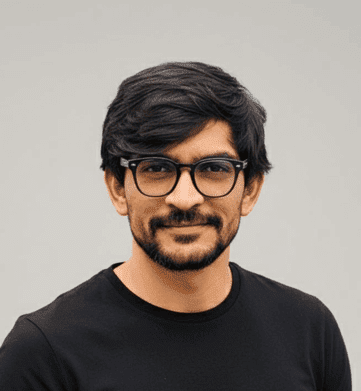Congratulations on stepping into the exciting world of Junk Removal with a knack for decluttering!
High demand, low startup costs, the flexibility of doing business, and a recurring business model make junk removal a profitable business opportunity for new entrepreneurs.
It not only clears out clutter but also contributes to cleaner spaces and eco-friendly practices. If you’re wondering how to kickstart this thrilling junk removal journey, you’re in the right place.
However, starting your own junk removal business requires a well-drawn roadmap, and in the business world, that roadmap is your professional business plan.
So, we have prepared an essential guide for you to start writing a top-notch junk removal business plan that sets the stage for your money-making venture.
Why is a junk removal business plan necessary?
It is said that entrepreneurs who dive into business directly without crafting a business plan are probably delaying their success.
So, if you’re going to start your own junk removal company or want to grow an existing one, writing a junk removal business plan is a crucial step toward the success of your business.
It is not just a document; it’s a strategic tool that offers a roadmap for navigating the challenges and capitalizing on the opportunities that lie ahead in the waste management landscape.
An actionable plan provides a comprehensive view of your business goals, offered services, and operational aspects. Also, it helps you understand the target market and competitors.
Whether you’re seeking funding, a detailed business plan is your go-to guide that helps you map out your marketing strategies or estimate your financial statements.
So, having a professional business plan is a roadmap to success and empowers you to make informed business decisions. Without further ado, let’s move to a guide for an effective business plan.
How to Write a Junk Removal Business Plan?
Creating a business plan is crucial whether you’re starting a new junk removal business or looking to expand an existing one. In the following guide, you’ll find step-by-step instructions for developing each key component of your junk removal business plan. This will ensure you have a solid foundation for building a successful business.
1. Write an executive summary
An executive summary is the first section of the business plan intended to provide a brief overview of the entire business plan.
It should be clear, concise, and engaging, as it will make your first impression and attract investors or readers to delve further into your plan. Generally, it is written after the whole junk removal business plan is ready.
Start your summary by introducing your idea behind starting a junk removal business, explaining what it does and how it will be different. Take reference from the below example written using Upmetrics AI assistant.
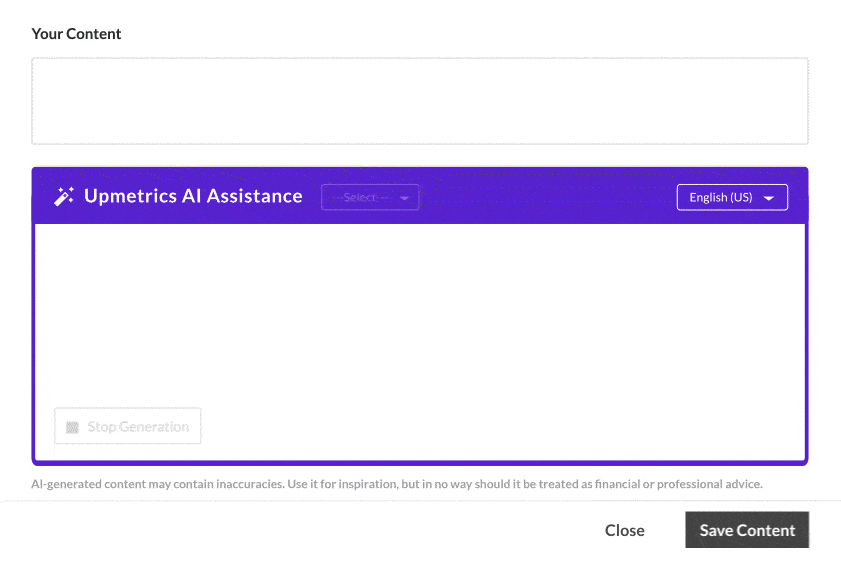
Clearly state your business goals, offered services, unique selling points, and financial projections that will be explored in greater detail within the plan. Don’t forget to outline market opportunities and marketing strategies.
After briefly explaining your business plan, end your summary with a call to action, inviting potential investors or readers to the next meeting if they are interested in your business.
2. Conduct a competitive and market analysis
Market research and competitor analysis section is a very crucial part of the junk removal business plan.
Take some time to go further and conduct thorough market research, as it unveils necessary information about the market size and growth potential of the junk removal industry in which you are operating.
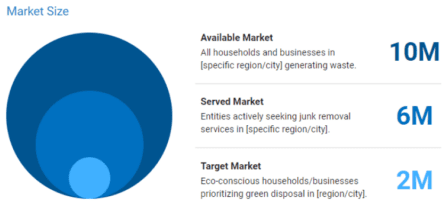
Now, recognize your target market and define your ideal customer. Know more about your target customers and describe who you target, residential property owners, small or medium-scale businesses, or large industrial corporations.
Identify and scrutinize all other junk removal businesses in the local market and understand your competitors better, including direct and indirect competitors.
Most likely, the other junk removal businesses in your area will be direct competitors, and indirect competitors can be thrift stores or landfills.
Evaluate their strengths & weaknesses, and explain how you can offer qualitative services to set a unique position in the local market. Also, define your hauling business’s competitive advantage.
Not just that, you can analyze emerging market trends in your industry and explain how your business will cope with all the trends.
Specify any regulations or licensing requirements that impact your business, such as safety regulations, occupational licenses, business permits, etc.
Some extra tips for writing the market & competitive analysis section of your business plan:
- Use various sources to gather data, including industry reports, market research studies, and surveys.
- Be specific and provide detailed information wherever possible.
- Include charts and graphs to help illustrate your key points.
- Keep your target audience in mind while writing the business plan.
3. Prepare a company overview
Now, it’s time to provide some foundational details like business type, legal structure, location, history, and mission statement that every business overview should include.
The company overview section should provide an in-depth understanding of your junk removal business description. And it should be precise and engaging. For your junk removal business, mention all the basic information about your business like:
- The name and type of your junk removal business (commercial or residential junk removal service provider)
- Company legal structure, whether a sole proprietorship, partnership firm or something else
- Location of your company and why you selected that place
- Ownership structure including % shares in the corporation
- Mission statement emphasizing core principles
- Achievements or recognitions for your incredible services (if any)
- Future goals to convey your aspirations and vision
In addition to that, discuss a little bit more about your business history, including when you started your business and how it came to be in its current position.
Refer to the below-written example describing the junk removal business history:
Established in [Year, e.g., “2018”], GreenClean Junk Removal was birthed from a vision to fill the gap in [city/region]’s waste management sector.
The journey from its humble beginnings to its present-day stature is a testament to relentless dedication and innovation.
Along the way, GreenClean Junk Removal has been honored with [specific recognitions, e.g., “the Eco-friendly Business Award in 2020”], cementing its reputation as an industry frontrunner.
4. Describe junk removal service offerings
Next, specify the scope of your junk removal service offerings. Provide details about the specific junk removal services offered to customers.
Create a list of junk removal services, it can be any of the following:
- Residential junk removal
- Commercial junk removal
- Construction site cleanup
- Recycling
- Dumpster rental service
- Garbage removal service
- Donation center services
Effectively communicate your services to the customers by sharing a detailed description of what it entails, the time required, precise pricing plans, and the qualifications of the professionals who will provide service.
Apart from that, list the junk removal equipment and tools required for seamless business operations, such as trucks, trailers, hand trucks, ramps, shovels, etc.
Here is an example of defining equipment and tools for junk removal services with the help of Upmetrics:

By providing a clear and compelling description of your offerings, you can help potential investors and readers understand the value of your business.
This section should be detailed, informative, and customer-focused. Keep language simple and make it crystal clear what your junk removal business is all about.
5. Prepare a marketing plan
In the competitive landscape of the junk removal industry, being noticed is very important. And so, you need a tangible marketing strategy to attract and retain your clients.
Here are some of the sales and marketing strategies for junk removal companies:
Unique selling proposition (USP)
Clearly define your junk removal business’s unique selling propositions; which can be your specialty junk removal services, expertise in the market, 24X7 availability, eco-friendly practices, etc.
Also, specify what sets your business apart from the competition and what benefits your target market. Take reference from the below example written using our AI assistant:
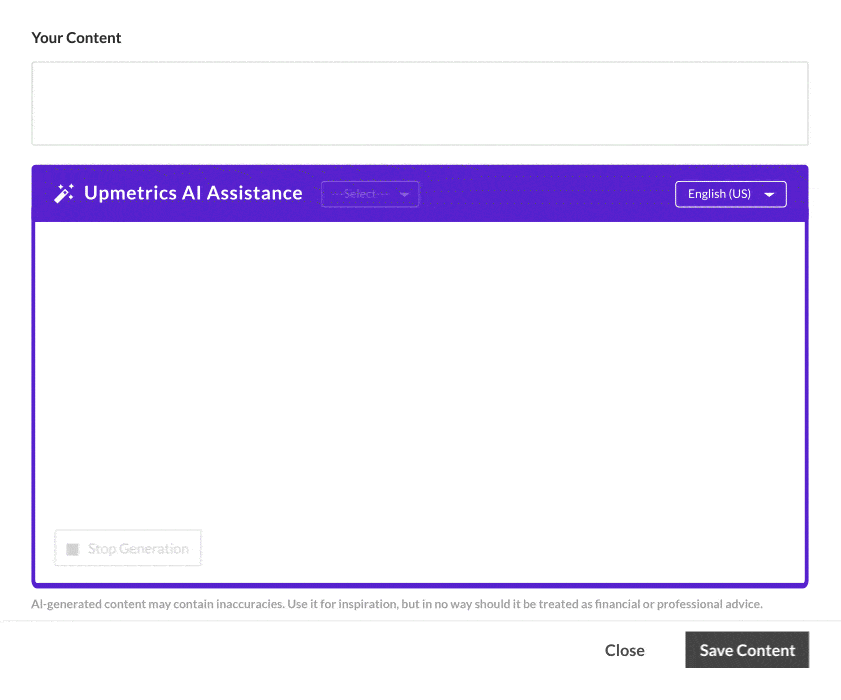
Pricing strategy
Develop a pricing strategy that is competitive and affordable yet profitable. Consider offering promotions, discounts, or packages for your junk removal services to attract new customers.
Online & offline advertising strategy
Create a marketing strategy that includes a mix of online and offline marketing tactics. Consider using social media marketing, email marketing, content marketing, brochures, and print marketing.
Branding
Having a professional website and a memorable logo can establish a strong brand and reach a wider audience. You can showcase all your services and build trust among potential customers.
Customer retention approach
Mention how your business will retain a loyal customer base and build trust among them. So, you can include loyalty programs, special events, or personalized services in your plan.
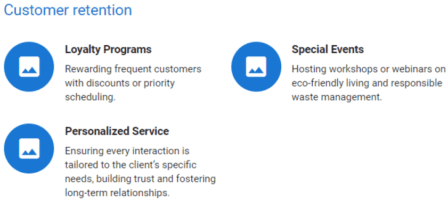
Sales strategies
Consider implementing a robust sales strategy such as offering competitive pricing, promoting 24/7 services, focusing on environmentally friendly practices, etc.
Feedback mechanism
Get insights from clients and establish a feedback mechanism. It will enhance your service offerings and highlight your belief in customer satisfaction. Be ready to adjust your strategies based on feedback and results.
6. Outline your organizational structure
Shed light on your organization structure as it provides an overview of the individuals responsible for running the junk removal business.
This section should provide a detailed description of the experience and qualifications of each manager, as well as their responsibilities and roles.
Start this section by describing your management team’s key members (owners, senior management, marketing managers, workers, and other people involved).
Don’t forget to present their roles, and responsibilities, including their education, professional background, and any relevant experience in the industry.
You can also create an organizational chart with reporting lines and how decisions will be made. Here is an illustration of an organization structure using Upmetrics:
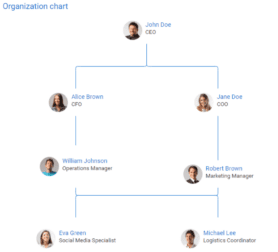
Doing so is very important to prevent any misunderstandings once the business is up and running.
Next, describe the compensation plan for the management team and staff, including salaries, bonuses, and other benefits. This can help key stakeholders to ascertain how much percentage is allocated to salaries.
If you have a board of advisors for your junk removal business, then mention them along with their roles and experience.
7. Create a logistics and operational plan
So, it’s time to delve into the intricacies of your business operations. A detailed logistics and operational plan ensures that your junk removal business runs efficiently, fulfilling client needs while adhering to safety measures.
Provide a quick overview of how you’ll efficiently collect, transport, and dispose of junk. The more streamlined your junk removal operations, the more satisfied your clients will be.
While writing this section, it’s important to consider the different aspects of your business operations. Here are the components to include in an operations plan:
Hiring plan
Explain the staffing requirements of your junk removal business, including the number of employees needed, their qualifications, and the duties they will perform. Also, specify the employee perks you will provide.
Operational process
Outline the processes and procedures you will use to run your junk hauling business. It encloses scheduling appointments, site visits, recycling and disposal facilities, operations and logistics, etc.
Take reference from the below example written using Upmetrics’ sample junk removal business plan:
Our streamlined processes are central to our efficient functioning:
Scheduling Appointments: Using [a dedicated software or platform], customers can conveniently book, reschedule, or cancel appointments.
Site Visits: Upon confirmation, our team conducts a preliminary site visit (if required) to assess the volume and nature of junk.
Recycling and Disposal: Adhering to our green ethos, we segregate junk for recycling. Items that can’t be recycled are responsibly disposed of in compliance with environmental standards.
Operations and Logistics: Efficient route planning ensures timely pickups and minimal fuel consumption. Our collaborations with recycling centers are periodically reviewed to ensure maximum recyclable waste processing.
Tools and Resources
Represent the tools and resources required to provide junk removal services(trucks, cleaning, and safety equipment). Also, mention the condition and quality of the equipment or any maintenance required.
8. Prepare financial projections
For a successful junk removal business, you will need a well-structured and in-depth financial plan with a realistic financial projection.
It is the most important section for investors as it offers a clear picture of your business’s projected profitability, fiscal growth, and cash generation capacity.
In this section, you can highlight the income statement, cash flow statements, balance sheets, break-even analysis, and funding needs for 3-5 years.
When creating the above financial statements, be sure to incorporate below key costs required in starting or growing a junk hauling business:
- Junk removal equipment and dumpster truck costs
- Overhead costs or staff salaries
- Business Insurance
- Taxes
- Other junk removal business startup costs (if you’re a new business) like legal expenses, permits, computer software, and equipment
Income statement
An income statement is generally known as a profit and loss statement, or P&L, indicating your revenue and then subtracting your operating costs to show whether you turned a profit or not.
So, create a projected profit & loss statement that describes the expected revenue, cost of product/services sold, and operational costs. Your business’s anticipated net profit or loss should be computed and included.
Here is an example of a projected unit sold v/s revenue generated for a junk removal business using Upmetrics:

Cash flow statement
A proper cash flow statement helps you notice how much money you need to start a junk removal business or grow an existing one and ensure that you never run out of money.
Don’t forget to estimate your cash inflows and outflows for the first few years of operation. It should include client cash receipts, vendor payments, loan payments, and other cash inflows and outflows.
Balance sheet
The balance sheet shows the financial future of your business. It classifies all your financial data into three parts: assets, liabilities, and equity.
Typically, a balance sheet is prepared once a year. Create a prospective balance sheet at the end of your first year using your profit and loss spreadsheet and cash flow statement.
All the above financial factors can help you determine the break-even point and funding needs. Evaluate the funding resources, including bank loans, SBA-guaranteed loans, angel investors, and personal savings.
However, calculating all the financial statements from scratch can be challenging, but it’s easier than ever with Upmetrics’ robust financial forecasting tool.
All you need to do is provide the information you have, and let the tool evaluate financial projections, and create visual reports for you. No manual data entry, recalling Excel formulas, or preparing graphs—nothing.
Download a junk removal business plan template
Are you ready to start writing a junk removal business plan? And want to get help with your business plan? Well, here you go. Download our junk removal business plan template now.
This expertly crafted template is designed with junk removal businesses in mind. With a step-by-step guide and example, it assists you in simplifying your planning process and directs you with each crucial step.
Import data into your editor and start writing your own business plan!
The Quickest Way to turn a Business Idea into a Business Plan
Fill-in-the-blanks and automatic financials make it easy.
Start preparing your business plan with Upmetrics
Finally, you know how to write a business plan for your junk removal company with the help of our free sample business plan. Now, you are a step closer to launching your business confidently.
Whether you are an experienced entrepreneur or a novice to the business world, writing a business plan with accurate financial forecasts is daunting. But it is a lot smoother with the #1 business planning app.
Don’t wait; seize the opportunity to kickstart a thriving endeavor!
